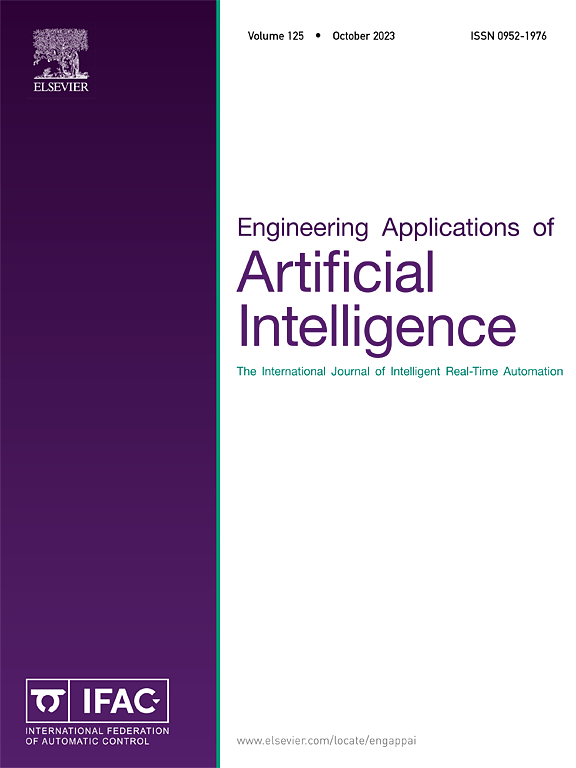Parallel multi-layer sensor fusion for pipe leak detection using multi-sensors and machine learning
IF 8
2区 计算机科学
Q1 AUTOMATION & CONTROL SYSTEMS
Engineering Applications of Artificial Intelligence
Pub Date : 2025-04-26
DOI:10.1016/j.engappai.2025.110923
引用次数: 0
Abstract
Effective pipe leak detection is critical for maintaining the structural integrity and efficiency of water distribution systems and preventing damage such as sinkholes. Traditional leak detection methods often rely on single sensors, overlooking the advantages of multi-sensor configurations that capture diverse leak-related phenomena. To address this limitation, the study proposes an innovative machine learning-based sensor fusion approach called Parallel Multi-Layer Sensor Fusion (PMLSF), which leverages Convolutional Neural Networks (CNN) and Few-Shot Learning (FSL) to enhance leak detection. PMLSF integrates data from multiple sensors, including hydrophone, acoustic emission, and vibration sensors. The comparative analysis demonstrates that the PMLSF with multi-sensor systems substantially outperforms the CNN-based FSL (CNN-FSL) approach with single-sensor systems, achieving a leak detection accuracy of 97.1 % and leak location classification accuracy between 95.5 % and 97.4 %. Additionally, the study investigates the use of the acoustic emission sensor combined with CNN-FSL for early detection of material failure in pipes, demonstrated by a Pencil Test that achieved 92.3 % accuracy in detecting pencil breakage on the pipe. These results indicate that combination of CNN-FSL for the acoustic emission sensor and PMLSF offers a comprehensive solution for detecting and localizing existing leaks while predicting potential failures, thus laying a robust foundation for the development of reliable and efficient water distribution monitoring systems.
基于多传感器和机器学习的管道泄漏检测并行多层传感器融合
有效的管道泄漏检测对于保持配水系统的结构完整性和效率以及防止天坑等损害至关重要。传统的泄漏检测方法通常依赖于单个传感器,而忽略了多传感器配置的优势,即捕获不同的泄漏相关现象。为了解决这一限制,该研究提出了一种创新的基于机器学习的传感器融合方法,称为并行多层传感器融合(PMLSF),该方法利用卷积神经网络(CNN)和Few-Shot学习(FSL)来增强泄漏检测。PMLSF集成了来自多个传感器的数据,包括水听器、声发射和振动传感器。对比分析表明,多传感器系统的PMLSF大大优于单传感器系统的基于cnn的FSL (CNN-FSL)方法,泄漏检测准确率达到97.1%,泄漏定位分类准确率在95.5% ~ 97.4%之间。此外,该研究还研究了声发射传感器与CNN-FSL相结合用于管道材料失效的早期检测,通过铅笔测试证明,在检测管道上的铅笔破损方面达到了92.3%的准确率。综上所述,声发射传感器的CNN-FSL与PMLSF的结合为探测和定位现有泄漏并预测潜在故障提供了全面的解决方案,从而为开发可靠、高效的配水监测系统奠定了坚实的基础。
本文章由计算机程序翻译,如有差异,请以英文原文为准。
求助全文
约1分钟内获得全文
求助全文
来源期刊

Engineering Applications of Artificial Intelligence
工程技术-工程:电子与电气
CiteScore
9.60
自引率
10.00%
发文量
505
审稿时长
68 days
期刊介绍:
Artificial Intelligence (AI) is pivotal in driving the fourth industrial revolution, witnessing remarkable advancements across various machine learning methodologies. AI techniques have become indispensable tools for practicing engineers, enabling them to tackle previously insurmountable challenges. Engineering Applications of Artificial Intelligence serves as a global platform for the swift dissemination of research elucidating the practical application of AI methods across all engineering disciplines. Submitted papers are expected to present novel aspects of AI utilized in real-world engineering applications, validated using publicly available datasets to ensure the replicability of research outcomes. Join us in exploring the transformative potential of AI in engineering.
 求助内容:
求助内容: 应助结果提醒方式:
应助结果提醒方式:


